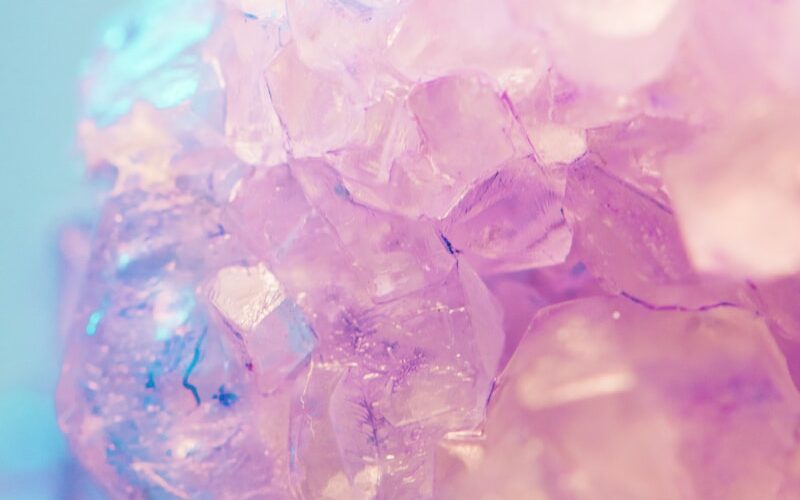Did you know that colours have the remarkable ability to influence our emotions, mood, and overall mental health and well-being? Your mind is like a blank canvas, and your thoughts are the palette of colours that paint the masterpiece of your life. When you choose shades of doubt and despair, your world may seem cloaked in shadows and darkness. When you introduce the vibrant hues of positivity, hope, and joy, you can transform the landscape of your mind into a breath-taking panorama of possibilities.
Are you ready to embrace the inspiration that comes with every colour and master the artistry of your thoughts ? Remember that each stroke of your mental brush has the power to shape your world into a stunning tapestry of dreams and aspirations, illuminated by the radiant light of your positive mindset.
In a world where 1 in 4 people are affected by mental health disorders, according to the World Health Organization, harnessing the power of colours could be a crucial step in our everyday life. A study conducted by the Pantone Color Institute and the University of Texas found that participants’ moods were significantly influenced by the colours of their surroundings. Researchers at the University of Sussex found that exposure to green spaces led to a 62% reduction in mental distress among participants.
In this article, we aim to inspire you with the vibrant world of colours, exploring their profound impact on our mental health and well-being. By weaving together scientific research and practical applications, we will explore the power of colours and demonstrate how they can shape our path to a healthier, more balanced, and vibrant life. So, let the colours guide you towards a brighter and more harmonious daily existence, as we embark on this journey of self-discovery and healing together.

The science behind colour perception
There is a scientific relationship between colour and the brain, it is important to understand the underlying mechanisms that facilitate the influence of colour on our emotions, behaviour, and overall mental health. Colour perception begins with light entering the eye, where it is absorbed by specialized cells called photoreceptors, located in the retina.
There are two types of photoreceptors: rods, which are responsible for vision in low-light conditions, and cones, which detect colour and function best in bright light. There are three types of cones, each sensitive to different wavelengths of light – red, green, and blue – allowing us to perceive a vast array of colours.
The signals from the photoreceptors travel through the optic nerve to the brain, where they are processed in the visual cortex. Here, colour information is combined with other visual information such as shape, size, and texture to create a comprehensive representation of the world around us.
How Do Colours Affect Mood & Emotions?
Imagine walking into a room bathed in a warm golden hue, reminiscent of a bright summer day. Your spirits lift, and an inexplicable surge of energy raises through your veins. This captivating effect, although seemingly magical, can be attributed to the transformative power of colours on our mental health and well-being. Let’s journey through the vibrant world of colours and uncover their profound influence on our emotions, mood, and psyche.
The colours of serenity
Our surroundings play a crucial role in shaping our emotions and state of mind. Calming colours like blue, green, and soft shades of purple can help to create a soothing environment that alleviates stress and anxiety. By infusing our living spaces and workplaces with these tranquil hues, we can cultivate a sense of peace and foster relaxation, focus, and mental clarity. So, the next time you feel overwhelmed, try seeking solace in the tender embrace of a serene landscape, adorned with the calming colours of nature.
Vibrant Hues to Energize and Uplift
In contrast to the calming shades, vibrant colours like yellow, orange, and red can invigorate our senses and elevate our mood. These warm colours, often associated with energy and excitement, can have an uplifting effect on our emotions and stimulate our minds. We can harness the power of these vivacious hues in our daily lives by incorporating them into our wardrobe, workspaces, or home décor. A splash of cheerful yellow or fiery red can act as a catalyst for creativity, motivation, and joy, illuminating our path to a brighter and more
The calming influence of cool colours
Blue, green, and soft shades of purple have a natural calming effect on our psyche. The tranquillity these colours exude can help reduce stress, anxiety, and restlessness, providing solace and comfort during turbulent times. By incorporating these soothing hues into our living spaces, work environments, or even our wardrobe, we create a serene atmosphere that fosters relaxation and mental clarity. The power of colors, especially those found in nature, can serve as an antidote to the hustle and bustle of modern life, guiding us towards a more peaceful state of mind.
Vibrancy and warmth: the energizing effect of warm colours
On the opposite side of the spectrum, warm colors like red, orange, and yellow can inject energy, vitality, and enthusiasm into our lives. These vibrant hues can stimulate our senses, lift our spirits, and evoke feelings of joy, warmth, and passion. When integrated thoughtfully into our daily lives, these dynamic colors can bolster our mood, ignite our creativity, and increase motivation. Whether you wear an invigorating shade of orange or decorate your workspace with splashes of cheerful yellow, these energizing colors have the potential to breathe new life into our mental state and illuminate our path to happiness and success.
Finding balance with neutral colours
Black, white, and grey, play a crucial role in creating a sense of balance and stability in our lives. These timeless shades can evoke feelings of sophistication, professionalism, and versatility. While neutral colours may not be as emotionally evocative as their more vibrant counterparts, they offer a canvas against which the expressive power of other colours can truly shine. By mindfully combining neutral shades with carefully chosen pops of colour, we can create a harmonious environment that supports our emotional well-being and promotes a healthy mental state.
Colour therapy and mindful living
The benefits of colours can be further harnessed through therapeutic practices such as colour therapy or chromotherapy, which use the frequencies and vibrations of colours to promote emotional and mental well-being. These holistic approaches can provide an accessible and effective means of enhancing our mental health, as we learn to surround ourselves with colours that uplift, soothe, or inspire us.
As we learn to lead more mindful and emotionally balanced lives, the power of colours offers a remarkable tool that can help us cultivate well-being and resilience. By understanding the psychological effects of different colours and consciously incorporating them into our daily lives, we open the door to a more vibrant, harmonious, and joyful existence.
So, let the power of colours illuminate your journey towards better mental health and well-being. Whether it is through mindful dressing, thoughtful interior design, or therapeutic practices, embrace the transformative potential of colours and let them guide you to a brighter, more colourful life.
The psychology of colour
Colours have a significant impact on our mood and emotions, often without us even realizing it. From the soothing hues of nature to the bold and vibrant shades found in urban landscapes, colours can evoke a range of emotions and influence our overall well-being. Understanding the psychological effects of colour can help us make more conscious decisions in various aspects of our lives, such as clothing, interior design, and branding. In this article, we explore the ways in which different colours affect our mood and emotions.
Warm Colours
Warm colours, such as red, orange, and yellow, are often associated with energy, passion, and excitement. These colours can evoke feelings of warmth, happiness, and enthusiasm, making them popular choices for stimulating environments and creative spaces.
- Red: Red is a powerful and dynamic colour that can evoke strong emotions, such as passion, love, and anger. It can also be associated with urgency, making it an effective colour for grabbing attention and inspiring action.
- Orange: Orange combines the energy of red with the optimism of yellow, creating a vibrant and uplifting hue. It is often associated with enthusiasm, creativity, and motivation, making it an excellent colour for encouraging productivity and boosting mood.
- Yellow: Yellow is often associated with happiness, optimism, and sunshine. As the most luminous color on the spectrum, it is an attention-grabber and can stimulate mental activity and promote a sense of energy.
Cool Colours
Blue, green, and purple, are often associated with calmness, tranquillity, and relaxation. These colours can evoke feelings of serenity and peacefulness, making them popular choices for creating calming environments and promoting relaxation.
- Blue: Blue is a calming and serene colour that is often associated with stability, trust, and reliability. It can help to reduce stress and create a sense of calm, making it an excellent choice for spaces where relaxation and focus are desired.
- Green: Green is the colour of nature, symbolizing growth, harmony, and balance. It can promote feelings of refreshment, restoration, and calm, making it a popular choice for creating a peaceful atmosphere in living spaces and work environments.
- Purple: Purple combines the stability of blue with the energy of red, resulting in a colour that is often associated with creativity, spirituality, and luxury. It can evoke feelings of sophistication, mystery, and imagination, making it an inspiring and enigmatic hue.
Neutral Colours
Black, white, and gray, can create a sense of balance and stability when combined with other colors. They are often associated with professionalism, sophistication, and versatility.
- Black: Black is often associated with power, elegance, and sophistication. It can evoke feelings of strength and authority but can also be perceived as mysterious or intimidating.
- White: White is often associated with purity, simplicity, and cleanliness. It can create a sense of spaciousness and provide a refreshing contrast when paired with other colors.
- Gray: Gray is a versatile and balanced color that can convey a sense of calm, stability, and sophistication. It can also be associated with neutrality and practicality, making it an ideal color for creating a professional and modern atmosphere.
The impact of colors on our mood and emotions is a fascinating aspect of human psychology. By understanding the various effects that different colors can have on our feelings, we can make more informed choices when it comes to clothing, interior design, and personal expression. So, the next time you find yourself selecting colors for your home, wardrobe, or workspace, consider the emotional response they may evoke, and create a harmonious environment that supports your well-being and emotional balance.
Colours and mental health: harnessing the power of hues for well-being
Colours have a profound impact on our mental health, influencing our emotions, mood, and overall well-being. By understanding the psychological effects of different colours, we can incorporate them into our lives to promote a sense of balance, positivity, and healing. In this article, we will explore how various colours can be used to support mental health and discuss practical ways to harness their benefits in our daily lives.
Creating a soothing environment
Colours that evoke a sense of calm and tranquillity, such as blue, green, and soft shades of purple, can help to create a relaxing environment that alleviates stress and anxiety. Incorporating these colours into your living spaces or workplace can contribute to a peaceful atmosphere that fosters relaxation, focus, and mental clarity.
- Painting walls in calming hues, or using accents such as pillows, curtains, and rugs, can transform a room into a soothing sanctuary.
- Choose artwork or photographs featuring serene landscapes, such as ocean scenes, forests, or sunsets, to enhance the calming effect.
Boosting Mood and Energy Levels
Bright and warm colors, such as yellow, orange, and red, can have an uplifting effect on our mood and energy levels. By strategically using these colors in our daily lives, we can stimulate our minds and promote positive emotions, such as happiness and motivation.
- Incorporate energetic colors into your wardrobe to instantly lift your mood and increase your self-confidence.
- Use bold accents or accessories in workspaces to stimulate creativity and maintain motivation throughout the day.
Encouraging emotional healing and balance
Certain colours can evoke emotions that help emotional healing and promote a sense of balance. Soft, earthy tones, such as warm beige, muted greens, and soft blues, can encourage feelings of comfort, stability, and grounding.
- Choose clothing in nurturing colours to create a sense of security and reassurance during challenging times.
- Incorporate healing hues in your personal spaces, such as your bedroom or a designated meditation area, to enhance emotional healing and create a sense of harmony.
Colour therapy for mental health
Also known as chromotherapy, colour therapy is a holistic approach that uses the frequencies and vibrations of colours to nurture emotional and mental well-being. By surrounding ourselves with specific colours, we can harness their healing properties and improve our mental health.
- Try using coloured light bulbs, filters, or lamps to create an atmosphere that supports your emotional needs.
- Meditate with coloured crystals or visualize specific colours during mindfulness exercises to balance your energy and promote healing.
Colours have a powerful impact on our mental health, offering a range of benefits from stress relief to emotional healing. By mindfully incorporating colours into our lives, we can create environments that support our emotional well-being and help to maintain a healthy mental state. Whether it’s through clothing, interior design, or colour therapy, embracing the psychological effects of colours can lead to a more balanced, harmonious, and vibrant life.







